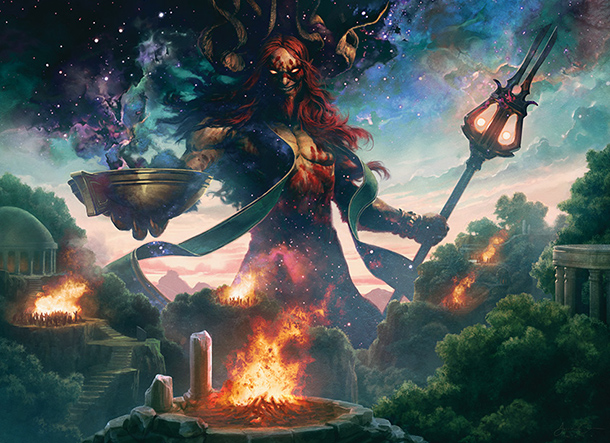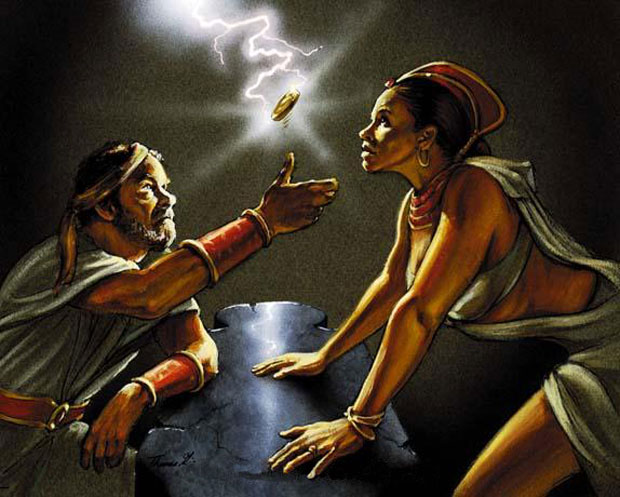Welcome back, constant readers
Last time I think I made it as far down the “Greater Fool Theory” rabbit hole as wikipedia pages is going to take me. I think we covered some new ground and maybe we’ll get some of those concepts to stick. We might; I caught someone on Reddit encouraging someone not to be a “baggage holder” which I thought was pretty sweet. I made a case for not buying when it only helps people who bought in cheaper. What say we put an end to all the non-traditional finance articles for a while? It was cool to delve into theory for a while, but I felt like I covered “don’t do this” thoroughly. What should you do when you’re not too busy not doing that stuff?
That’s a good question. I think I am going to go back to what I know. And what I know is that if you live in a somewhat densely-populated region of the world, there is a good shot you’re fewer than 50 miles from Magic cards you want and that are owned by someone who doesn’t know what they’re worth.
I know that somewhere in the United States there is a guy who owns a computer repair shop and sells Magic cards out of a dirty, cracked display case. He looks up card prices in a Scrye magazine from 2003 and takes mint condition cards out of a cardboard longbox and gives a discount if you pay him with cash. The cards in the case are just for show- he only sells the cards from the longboxes that have been untouched by human hands for years. I know because I bought Sylvan Libraries from him for $4 and we talked about Baseball.
I know that somewhere in the United States there is a guy who has a few dirty binders behind the counter of his comic book shop. He priced the cards back during Mercadian Masques and he has a computer that he uses as a cash register, but it doesn’t connect to the internet. He writes receipts by hand with an ornate silver inkpen and figures out the tax in his head. I know this because I bought Unhinged booster packs from him at MSRP, Tower of the Magistrates for $2.50 and a Karakas for $5 when they were $40 and we talked about our favorite “Daredevil: the Man Without Fear” writers.
I know that somewhere off a dirt road that you will only access if you make a wrong turn as I did there is a store called the “Antique Barn” with an old cracker barrel out front with an electric lamp that only looks like an oil lamp and inside they have a box of Magic cards with a handwritten sign that says “Each card $1 dollar[sic]” and I bought three Goblin Lackey, four Recruiters, five Elephant Grass and a Sterling Grove for $1 each. When I asked how much he would sell me Portal Basic lands for he said “Whassda sign say?” before spitting chewing tobacco spit into an Ice Tea bottle. I left the lands.
I know that when I go to a town I’ve never been before, I do what you would do. You pull up the Wizards Store locator and just see if there is a place that sells cards, holds events, has a community. You’ll drive past it until you realize you saw a cardboard cutout of Gideon or a sign with Jace on it, sun-weathered and dog-eared, and you’ll turn the car around and go back. They’ll have cases full of cards and they’ll look the prices up on Star City Games and knock 5% off and beam magnanimously like they offered you a free gold bar instead of cards that are still 15% above TCG Player. You’ll look for two minutes then pack back into the car. If there are five places in that town, four will be like that and one of them will be OK.
I know this because Ryan Bushard and I like to go on shop crawls and hit lots of stores. I wrote about one of them on QS a million years ago. We called dozens of shops ahead of time to see which ones we could eliminate based on a phone conversation and still hit a lot of busts. We hit a few great ones, too, but the best shops we hit were on accident. People who do this sort of thing usually do it wrong. I know, I did it wrong for a long time, and I still do.
How often do you check your local Goodwill? I have found cards there. I haven’t found anything great, but if Reddit is to be believed every few months someone somewhere will hit it big and find very good cards for almost free. I have ruled out my town. Have you? You live somewhere after all. Mothers clean out closets when kids go to college. Good stuff ends up in odd places. It takes five minutes to look.
Your success rate at garage sales is going to be under 5%. Better go to at least 20 in your life if you want to beat the odds. Have you gone to 20 garage sales looking for cards?
You want to know the REAL goldmines? Baseball card shops. Shops that sell gold coins and geodes and old, weathered newspaper clippings in vinyl bags. Flea markets in small, flyspeck towns. You think you’re going to show up in Duluth Minnesota and find a $5 Karakas in a binder ten minutes before an FNM starts with people elbowing you out of the way so they can buy sleeves or pay their entry? You think you’re going to find good singles in a binder that doesn’t have a layer of dust on it?
I would wager there is a store in the town you live or an adjacent one you’ve never set foot inside. It doesn’t look on the outside like it has Magic cards inside. That’s the point. You want to be first. You want them to reach down underneath a counter, or move a stack of comic books to uncover an old box. You see Pokemon cards mixed in? Great, they aren’t looking that up on Star City. They’re probably going to take an offer on the box. I’d wager there is value fifty miles from where you’re seated and you never thought to look there because no one thought to look there. I used to think I had to go far from home to find the value. There couldn’t be anything close to where I live, right? I would have found it already. Someone I know would have. How are you supposed to find undiscovered treasure if you think like everyone else? Start ruling local places out. Widen your search to neighboring towns.
I played FNM and booster drafts for 18 months in a motorcycle garage after they closed for the night, two card tables jammed between displays for helmets and gloves, the air smelling like oil. Should you check every motorcycle repair shop and used car dealership and petting zoo for singles? I can’t tell you what to do.
But I know no one else checked there first.
Finance Quick Hits
- We don’t know much about Born of the Gods, but neither does anyone else. We’re getting a G/W Temple. Expect GW stuff to increase in price on hype alone. Be a seller, not a buyer in those situations.
- Kiora looks pretty bad to me, but there is hype. Temple of Mystery is at its floor. $5 is demonstrably the ceiling for a temple, but Kiora hype could make this happen and that’s a double-up.
- Kami of the Crescent Moon is selling for $6 on TCG Player. Check any and all gold coin stores and computer repair shops near you. A lot of weird stuff spiked this month.
- It’s too late for Genesis Wave, but if that deck is a thing, cards like Primeval Titan have room to go up. Be prepared.
- Sam Black is brewing in Modern. Pay attention when Sam Black brews.
- When the new set comes out we will still be using packs of Theros to booster draft. Take this into consideration.


